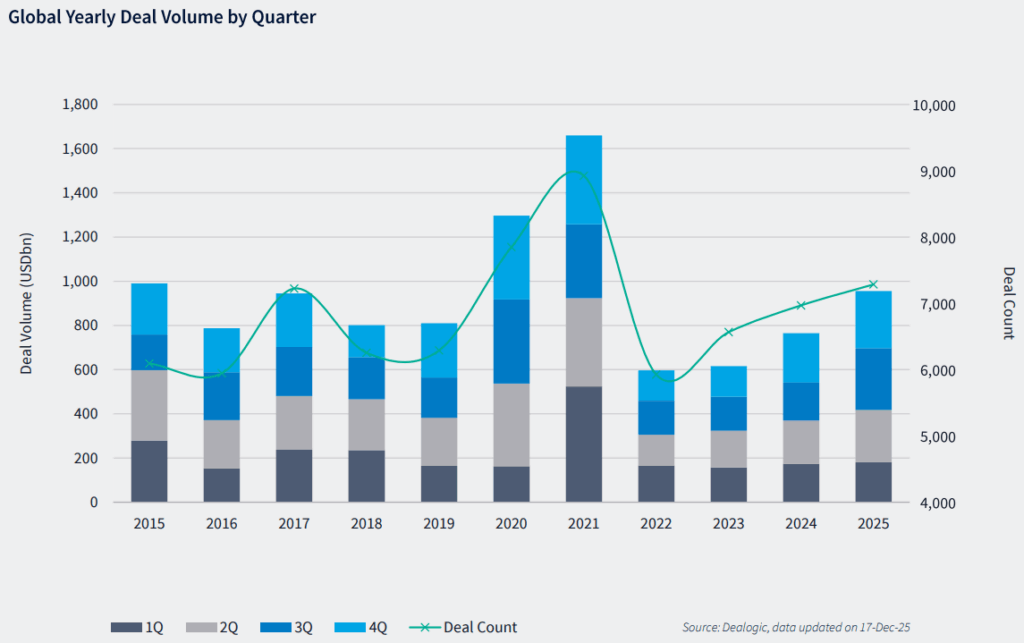IPO investor bias for large-cap listings leaves sponsors to feast on mid-market – ECM Pulse EMEA
- Investors focusing on large-cap listings likely to get index inclusion
- Mid-cap IPO candidates must be cheap or unique
- Sponsors focusing on middle market with large-cap financing difficult
A new structural dynamic appeared in the European capital markets in 2024, one that is predicted to continue into 2025, of a disparity in strategic options available for sellers of large and mid-cap companies.
The dynamic is one where sellers of large-cap companies have to focus on public markets over private sales to sponsors to exit their companies, given how difficult it has been for private equity companies to raise the capital needed to acquire larger assets.
On the other side of the coin, owners of mid-cap firms are finding it increasingly difficult to list companies that many investors feel are not large enough for equity markets.
The dynamic was evident at the beginning of this month, with Bain Capital and Cinven appointing banks to run the IPO of German pharmaceutical company Stada Arzneimittel after lengthy sale talks.
The same dynamic is true in the case of the German business of TenneT, a Dutch state-owned power network manager, which is now firmly on an IPO track after talks to sell the division to the German government failed.
Large-caps deals have been dominant in Europe’s IPO pipeline this year with the USD 2.5bn equivalent listing of Swiss skincare firm Galderma [SWX: GALD], the USD 2.9bn equivalent IPO of Spanish luxury group Puig [BME:PUIG] and the USD 2.45bn equivalent IPO of CVC [AMS:CVC] contributing significantly to Europe’s IPO volumes this year.
Each company was worth over USD 14bn when listed.
The preponderance of big deals means that Europe’s volumes have easily surpassed 2023 levels although the number of deals that have priced in 2024 is far lower than last year and is unlikely to get much larger before year-end.
Supersize me
Three ECM bankers speaking to this news service noted that equity investors are pivoting more and more to larger cap IPOs and that it was getting tougher to engage them on smaller equity stories.
“All the focus is now on large-cap assets, and you can see that in indices with middle market stocks very cheap,” said one. “A lot of this is to do with passive money distorting valuations but it means that equity investors, in many cases, often will only look at things that are large enough to get index inclusion.”
A second ECM banker noted that some of the IPOs in Europe that have been postponed, or canceled, in 2024 were typical of good businesses that just weren’t large enough to list in a market, which is becoming more focused on size.
That is not to say mid-cap listings are impossible but IPO investors speaking to ECM Pulse throughout the year have expressed such a bias for larger assets that many will not engage with smaller-cap debutants unless they are coming at such a huge discount to listed peers that it would be foolish not to give it some time.
Smaller companies can also have a successful listing if they are in a relevant sector, such as German defence components manufacturer RENK [ETR:R3NK], or give investors an exposure to an industry, which is hard to replicate in listed stocks.
Large-cap names also need to come at a discount to trade well but the strategy employed by Swedish sponsor EQT [STO:EQT], when it brought Galderma to market, of pricing a deal cheap, doing a very small secondary sale at IPO and then executing its first major sell-down six months later, is one that can be adopted by other sellers.
One private equity executive noted that his firm now had a pipeline of possible IPOs lined up for larger-cap assets that they deem too big to sell to other sponsors.
“It’s not easy, but doable,” he said. “If you have a good business, price it appropriately, sell it in a clear way, it can be done.”
That said the executive noted that even for larger assets it was still worth doing a dual-track process to create a level of price tension.
Sponsors shifting to mid-market
Sponsors are now playing a key role as a halfway house for founder or family-owned firms on the path to a public listing, as they are seen as having the expertise not only to take companies public but also to drive the growth necessary to reach the necessary size to do so.
As they are now listing companies at larger sizes, sponsors are also thinking about what size they need to enter to help generate the necessary returns.
Broadly, private equity firms have, in recent months, been dropping down into smaller deals for a multiplicity of reasons: smaller financing packages are easier to obtain, there are more levers to pull for the required growth journey, and there remains the exit optionality so that even if it is not an IPO candidate, trade or peer sponsors are still viable buyers.
PAI and Cinven are among the firms re-focusing attention on the mid-market, with Cinven hiring new partner Michel Weber to lead efforts and PAI registering the latest iteration of its mid-market fund.
The first ECM banker noted that investor crowding in large-cap stocks has made the mid-market far cheaper for sponsors.
“With credit markets recovering there are plenty of great opportunities for sponsors to acquire great mid-cap companies,” he said.












